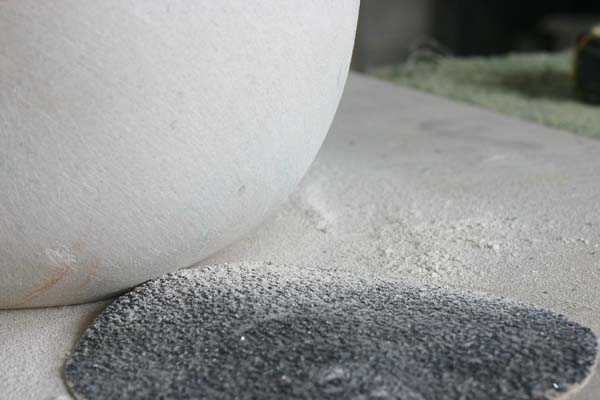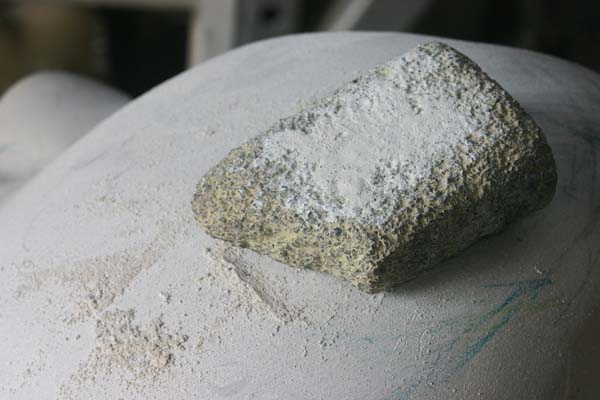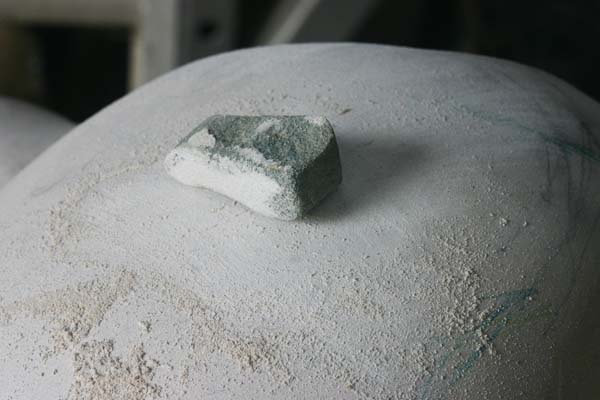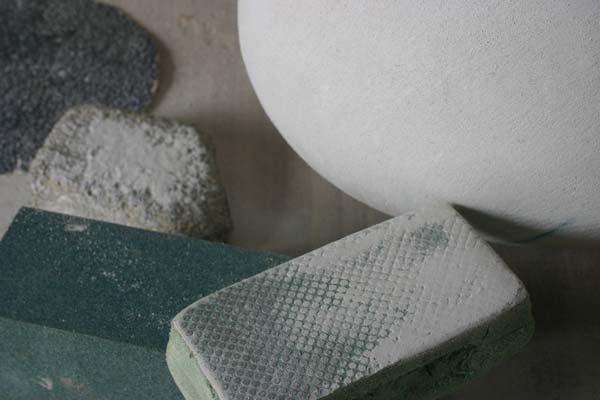For smooth curves

Abrade, repeat – abrade, repeat, repeat, repeat …..
To achieve smooth curves and clean lines in stone (which I like in my sculpture), I need abrasives. Lots of them, and lots of elbow-grease. After the chiseling, and filing, the surface still has marks, and these need to be sanded away. My hand feels the stone surface, finds the ‘blemishes’ and the other hand gets busy rubbing with the sanding block. The eye very easily spots a wobbly line, or uneven surface and this interrupts the flow and elegance of a piece, so I work hard to get rid of them.

Initially I start with a very course grit carborundum polishing block – I usually use these wet, which prevents the build-up of dust, but the frost lately had meant that is very cold work and punishing on the finger ends, so for now I’m keeping it dry.
Carborundum is a compound of silicon and carbon – silicon carbide. It occurs in nature as the extremely rare mineral moissanite (so named because a certain Henri Moissan discovered it in a meteor crater in 1893). All the commercially available carborundum however, is manufactured by growing crystals of it.
Grains of silicone carbide can be bonded together by sintering (a process of compacting and forming a solid mass of material by heat and/or pressure without melting it to the point of liquefaction). And this is how it comes to me, in small brick form, which is easily held in the hand. The fragments you see in the pictures are well worn and used.

Back to sanding – after the course grit, I move to a medium grit rubbing block. This takes out the scratches left by the course grit and so on, going finer and finer.

The whole surface of the sculpture is sanded many times to achieve the desired finish. Sometimes the last sand is done with a diamond coated pad. These pads are attached to a foam backing, which makes them rather nice to use, a bit squishy and warmer than the brick.
I can confirm that hand finishing and polishing a stone sculpture with rubbing blocks, to get really smooth, beautiful curves, does make your arms ache.

2 Comments
I know those diamond foam backed pads. they are used in glass also the smooth the surface and even bring it to a polish. not in my work though which is small and very sculptural. I use jewelry polishing points (grit impregnated rubber) with a flex shaft for my work though I usually try to get it right in the wax. It’s helpful for me to take pictures of the wax because areas that need fine tuning will show up in photos.
There are one or two processes we have in common I think Ellen – certainly the pads polish stone. You can get the diamond on sheet apparently too, but I’ve never used it. I’ve never used wax either – I read somewhere that it was good to use a mirror to look at your work in, shows everything up, like your photo’s.